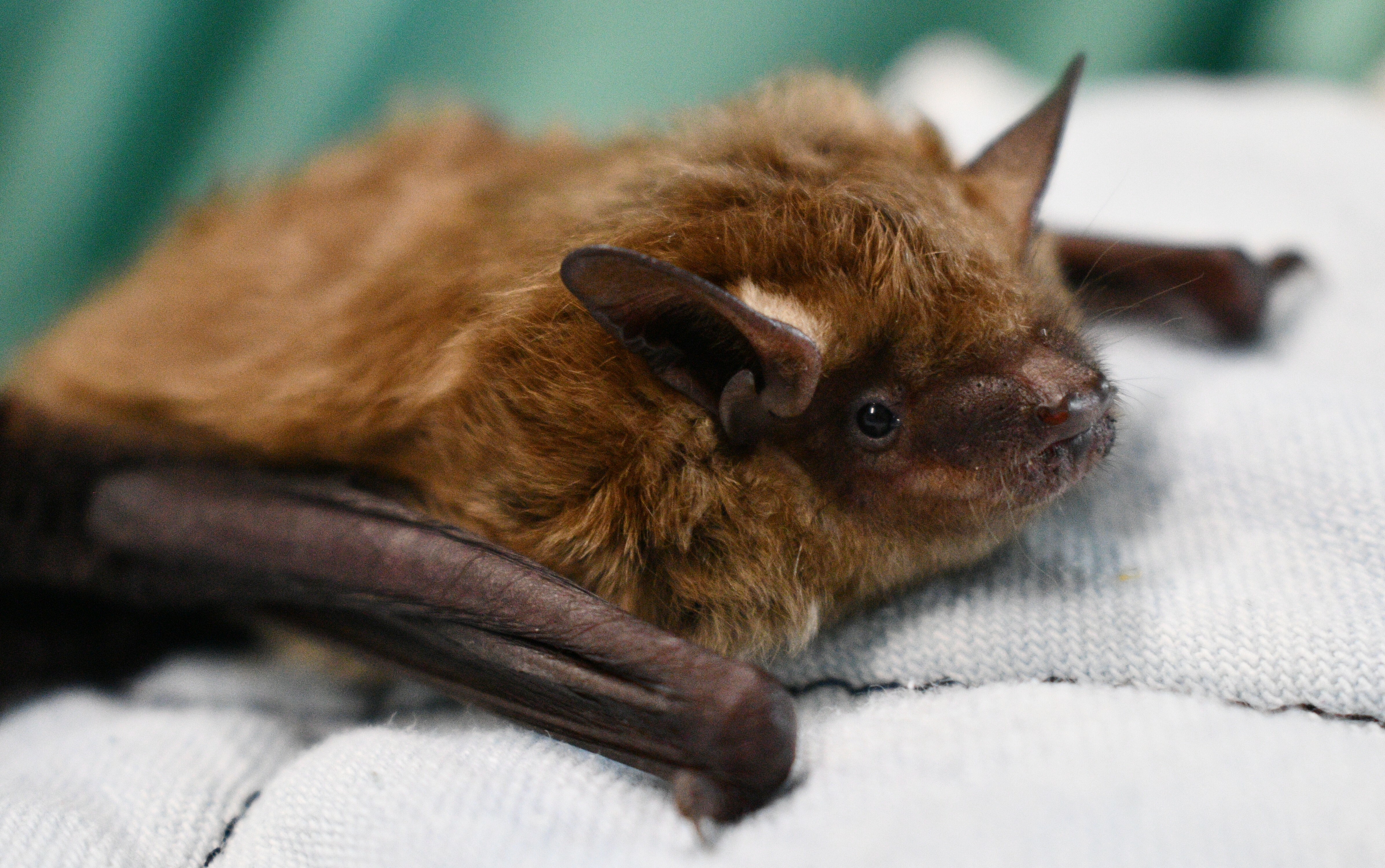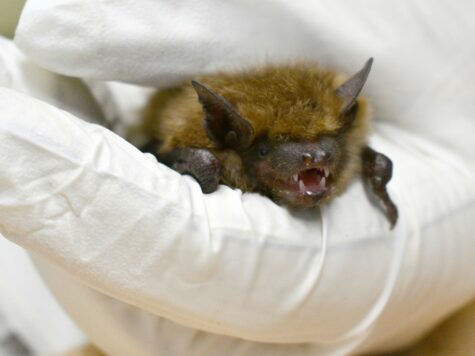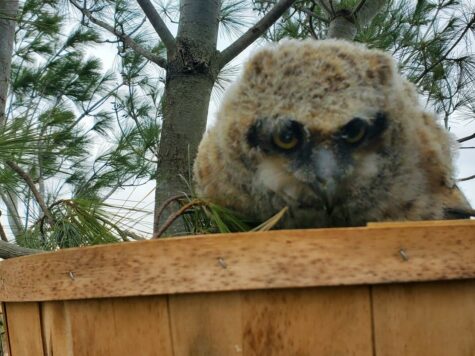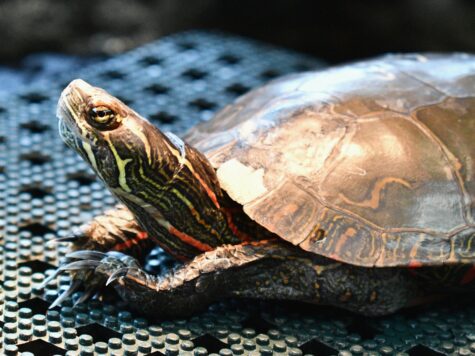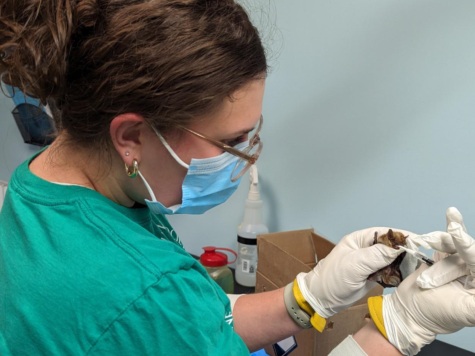Bats sometimes make their way into houses, perhaps to an attic or the inside of a wall. They can enter buildings through holes as small as half an inch, and are seeking stable temperatures for hibernation, a safe place to raise their young, and protection from predators. Since insects are not available in the winter, Wisconsin's bat species either migrate south or they hibernate in buildings or caves. Bats are typically not active during hibernation unless they are disturbed, so you may not even know they are there!
You may be startled to see a bat in your house, and they probably are too, since they usually stay in spaces that are not inhabited by people. However, sometimes they mistakenly enter a living space, and it is important to know what to do if this situation occurs, both for your safety and the safety of the bat. Living in close proximity to wildlife can be a public health concern, especially if they can access areas of the home with people and pets. Rabies is one disease that is frequently associated with bats, but not for the reasons you might think.
While it is possible for a bat to transmit rabies through a bite, the incidence of rabies in bat populations is low. In the United States, there are zero to two human deaths per year from bat rabies. The reason bats are a rabies concern despite few of them having the disease is because of their small size and small teeth—it is rare but possible for a sleeping or otherwise incapacitated person to be bitten without realizing it. In these cases, it is best to assume an exposure has occurred and test the bat for rabies (if they can be contained) or have the person get post-exposure shots.
What is unfortunate is that testing for rabies cannot be performed on a live bat—it is not a simple blood test since the rabies virus resides in nervous tissue. That’s why people taking the correct steps to prevent exposure when a bat is in a home can save a bat’s life!
Rules of Thumb
NEVER touch a bat without proper protection (thick gloves) and avoid handling them at all when possible.
Follow these instructions to safely contain the bat.
If you are unable to safely contain the bat right away, close off the room from the rest of the house, including blocking the bottom of doorways.
Do not sleep in a room with a bat.
Keep pets and children in a separate area of the house (pets should be kept up to date with their rabies vaccinations as well).
After you have resolved your current bat situation, explore ways to exclude bats from your home. Here are a few suggestions.
Bats are important pollinators, pest controllers, and seed distributors. In addition, many bat species are threatened or endangered at the state or federal level, and Wisconsin is home to four threatened bat species. Endangered species are protected, and it is illegal to kill them. Reducing interaction between people, pets, and bats through proper steps and humane exclusion keeps us all safe and healthy.
If you find a bat in your home contact, Dane County Humane Society’s Wildlife Center at 608-287-3235 and leave a message. Wildlife Center rehabilitation staff can help you determine if there has been any possible exposure that may require the bat to be tested for rabies, or if the bat is in need of rehabilitation. While you wait for a call back during our open hours, follow these instructions for containment on Dane County Humane Society's website.
Jean Kreig is a Reception Volunteer at DCHS's Wildlife Center.
Top photo: Big brown bat #23-2062 in rehabilitation at DCHS's Wildlife Center. Photo by wildlife volunteer Lesley Haven.
References:
Bat Conservation International
Wisconsin Department of Natural Resources (DNR)
Bat World Sanctuary
National Centers for Disease Control and Prevention (CDC)
The Humane Society of the United States
Friends of Horicon Marsh Education and Visitor Center
